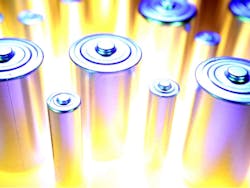The New York Public Service Commission approved demand response program rules aimed at giving energy storage resources long-term contracting opportunities.
In its September 17 decision, the commission changed proposed dynamic load management (DLM) implementation plans for New York’s six major electric utilities (CASE 18-E-0130).
The plans include two new DLM program options that will provide incentive payment certainty for participants for terms of at least three years.
“These new DLM program options are designed to be attractive to customers making use of energy storage technologies, and will encourage further deployment of energy storage technologies as quickly as possible,” the commission said.
New York’s current DLM program structures pay for yearly performance and result in a bias towards short-term, low-capital investment solutions, the commission said in its decision.
New York utilities to issue solicitations
New York has a goal of adding 1,500 MW of energy storage by 2025. The state has 93 MW of advanced energy storage with 841 MW in the interconnection queue, along with 1,400 MW of hydroelectric pumped storage.
With the approved plans in hand, New York’s major utilities — Central Hudson Gas & Electric, Consolidated Edison Company of New York, New York State Electric & Gas, Niagara Mohawk Power, Orange and Rockland Utilities and Rochester Gas & Electric — will issue DLM solicitations for resources that can be operating by May 1, with additional requests for proposals expected in other years.
Resources that aim to start participating in the DLM programs next year must already be in the New York Independent System Operator’s interconnection queue.
Two procurement components
The commission ordered two procurement components, including a day-ahead peak shaving “term-DLM” program. Participants will provide load relief with at least 21 hours advance notice during a specified four-hour period.
The second component is a reliability and peak shaving “auto-DLM” program. Program participants will provide load relief with at least 10 minutes advance notice at any time, except for specified off-peak charging hours, for four hours.
The commission said the 10-minute notice will enable the utilities to address real-time overloads and contingencies that require a nearly immediate response, which increases the value that the resources provide to ratepayers and supports the premium payment participants will receive.
“Moreover, as we continue to move toward achievement of the state’s ambitious renewable energy goals, the need to have flexible load resources at the distribution level will likely increase to balance residual load variations,” the PSC said. “The auto-DLM program is a first step in developing those needs and enabling such use cases.”
Energy storage yes, fossils no
The term-DLM program will be available across each utility’s service territory while the auto-DLM program will be offered in specified areas.
Energy storage resources will be allowed to participate in both the utility DLM programs and the state’s wholesale power market.
The commission decided to exclude fossil fuel generators from the term-DLM and auto-DLM programs.
Track news about energy storage and demand response. Subscribe to the free Microgrid Knowledge newsletter.







